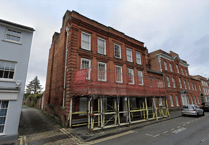NEWTON Valence has produced one of the most picturesque village plans.
And it is a tribute to the scenic beauty of a place whose history stretches back to before the Norman Conquest.
In terms of rural charm little has changed in the village since that time, so it is understandable its residents want to keep it that way and they could be safe from future development because Newton Valence is designated as “open countryside” under the hierarchy of settlements.
The upshot of that is that under current planning policy there will be no new development permitted, which should please residents as there was a 71 per cent objection to any further housing, although replacement buildings and extensions will be allowed providing they are not more than 50 per cent of the original footprint.
The plan has been complied by The Newton Valence Vision 2030 village plan steering group, which is made up of chairman Bob Fewings, Tara Simpson, Julian Balaam, Sue Harrington, who were also the final editing team, plus Hamish Janson, Peter Kirby, Andrew Parsons, Gill Pendlebury, Stephen Robertson, Mary Steed, Christopher Trower and Liz Try.
They have covered all aspects of life as it is now in the village, from the problems caused by its narrow roads and speeding traffic to the surroundings, conservation and environment of the area, community activities and facilities plus business and employment.
It gives a picture of how, in the last 50 years, Newton Valence has changed from a traditional farming community to a more diverse population with most residents having no direct connection with the land.
There are 166 adults on the electoral roll and the village has an increasingly ageing population.
The safety and crime section has highlighted the worry over the reduction of police presence in the village and the rising incidents of theft and petty crime, although the majority of residents felt their Neighbourhood Watch scheme was “very useful”.
The village’s fine 13th Century church and its preservation gets a special section – the majority of residents said they would like it to be open seven days per week – as well as an interesting section on the history of the village.
Newton Valence is mentioned in the Domesday Book and there is evidence of occupation from around 3,000 BC, although a “mark stone” from the Neolithic period suggests a much earlier settlement of the area.
Under the section on footpaths and bridleways in the plan, there is a call to undertake a survey and identify particular stiles and paths in need of attention and that they should be regularly maintained.
Strangely, when it was suggested there was the possibility of their houses being connected to mains gas and sewage, doing away with septic tanks, there was an even split for and against, with those opposed worried it would make Newton Valence a “more desirable location for housing development”.
Four tranches of local government affect Newton Valence – the parish council, who were praised for their ease of communication with the village, East Hampshire district and Hampshire county councils, and the South Downs National Park Authority.
Each will have a say on the future planning of the village but it is hoped they will respond to residents’ pleas to listen to them as they are concerned that higher tiers of local authority are focused on the bigger picture and are not efficiently aware of the issues affecting village communities.
The project has been funded by grants from the parish council and East Hampshire District Council’s community projects fund.
The Newton Valence parish plan has been adopted by East Hampshire District Council and by the South Downs National Park Authority.




